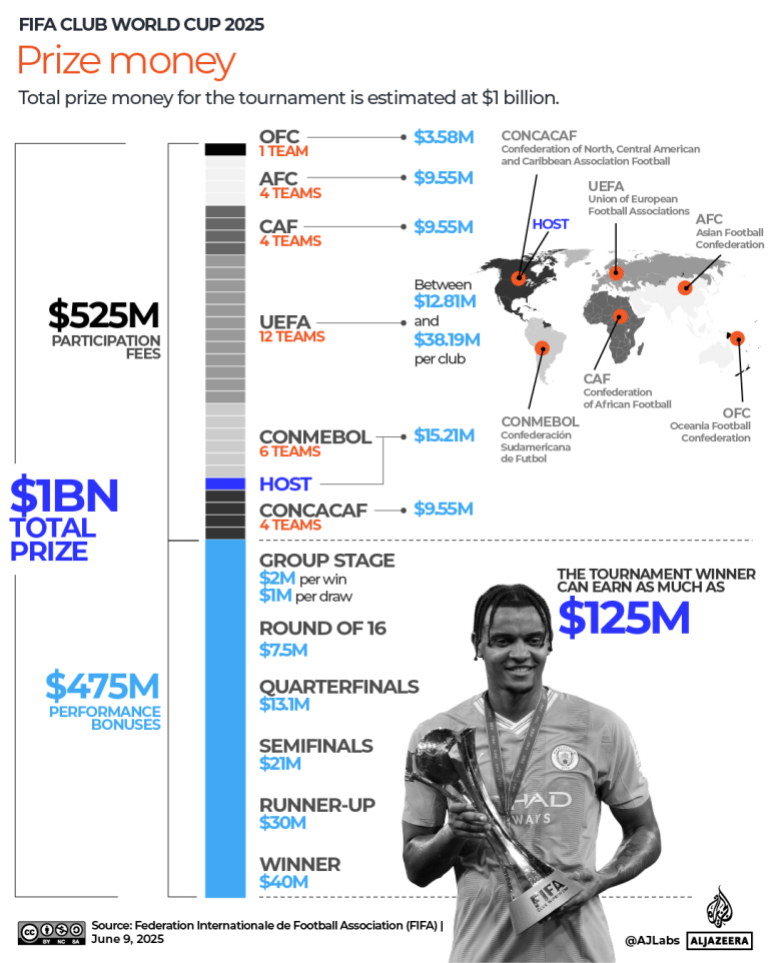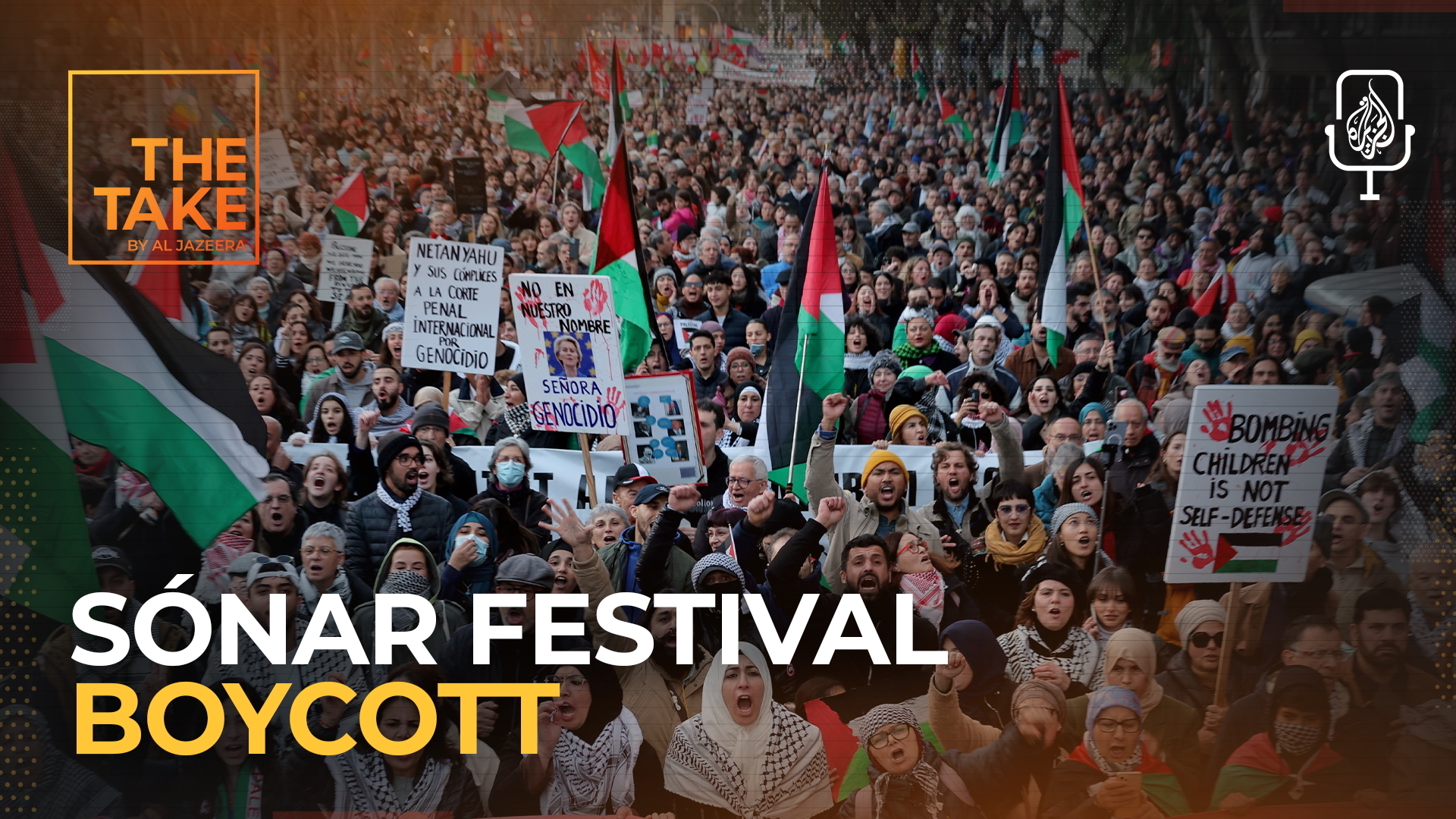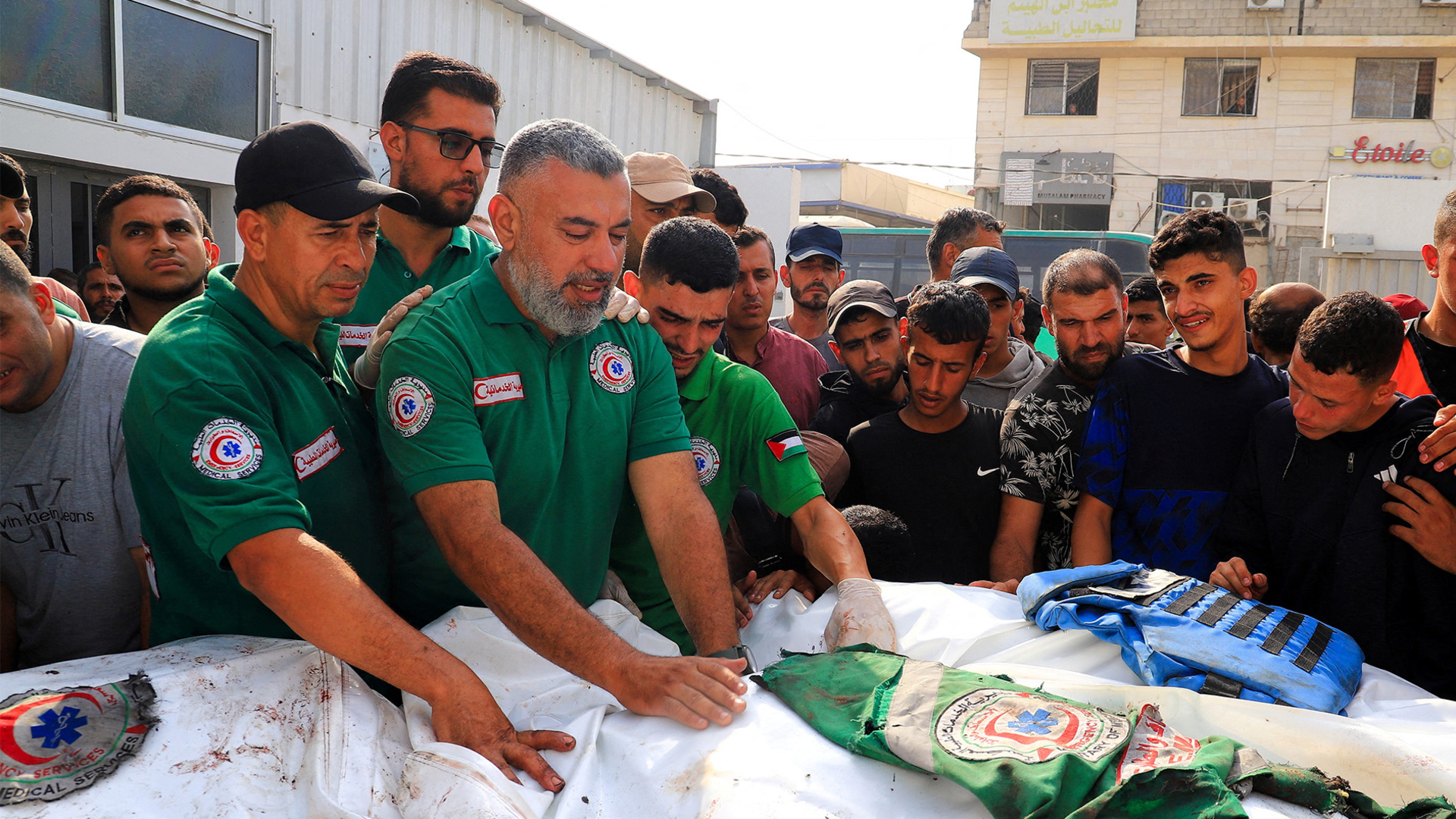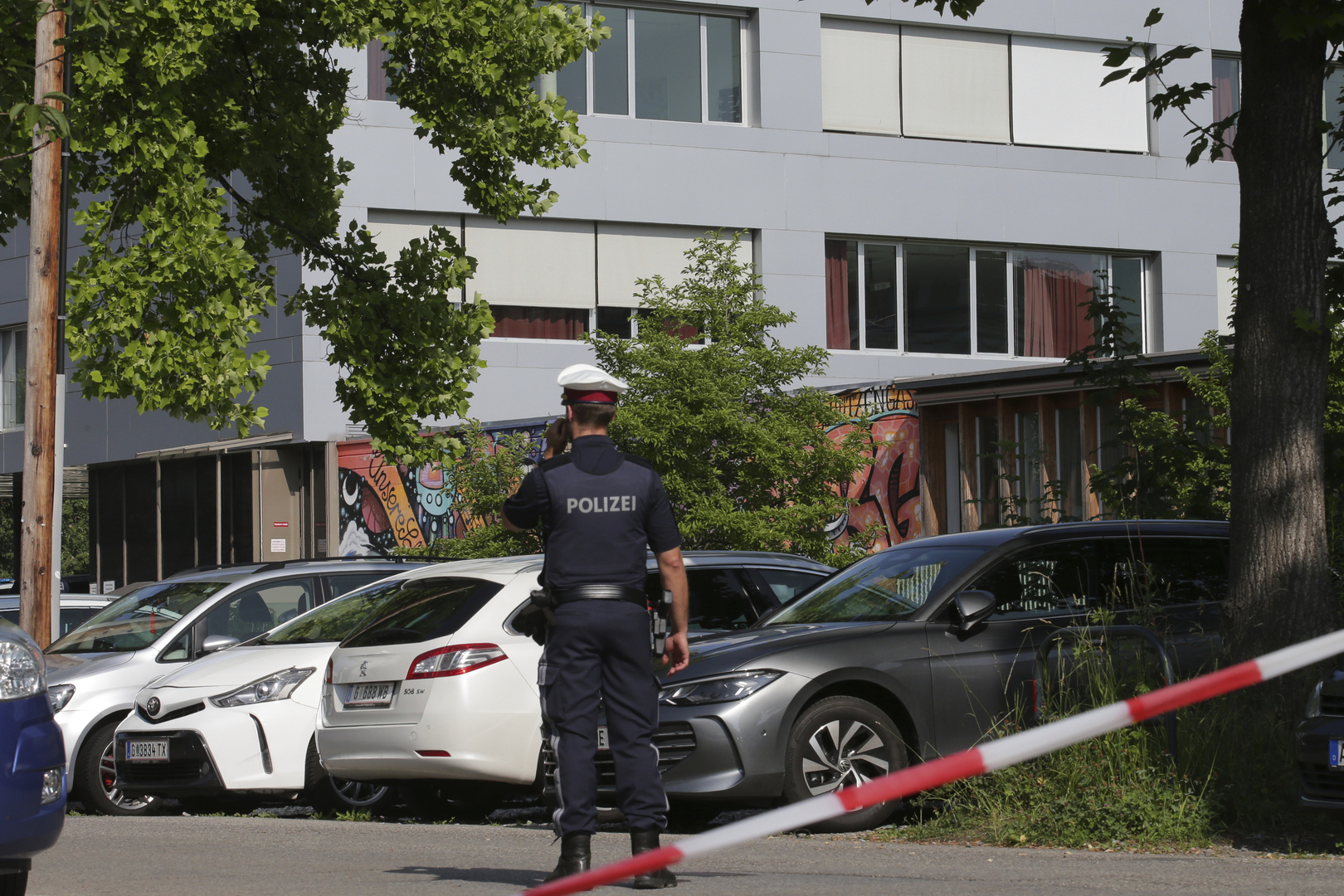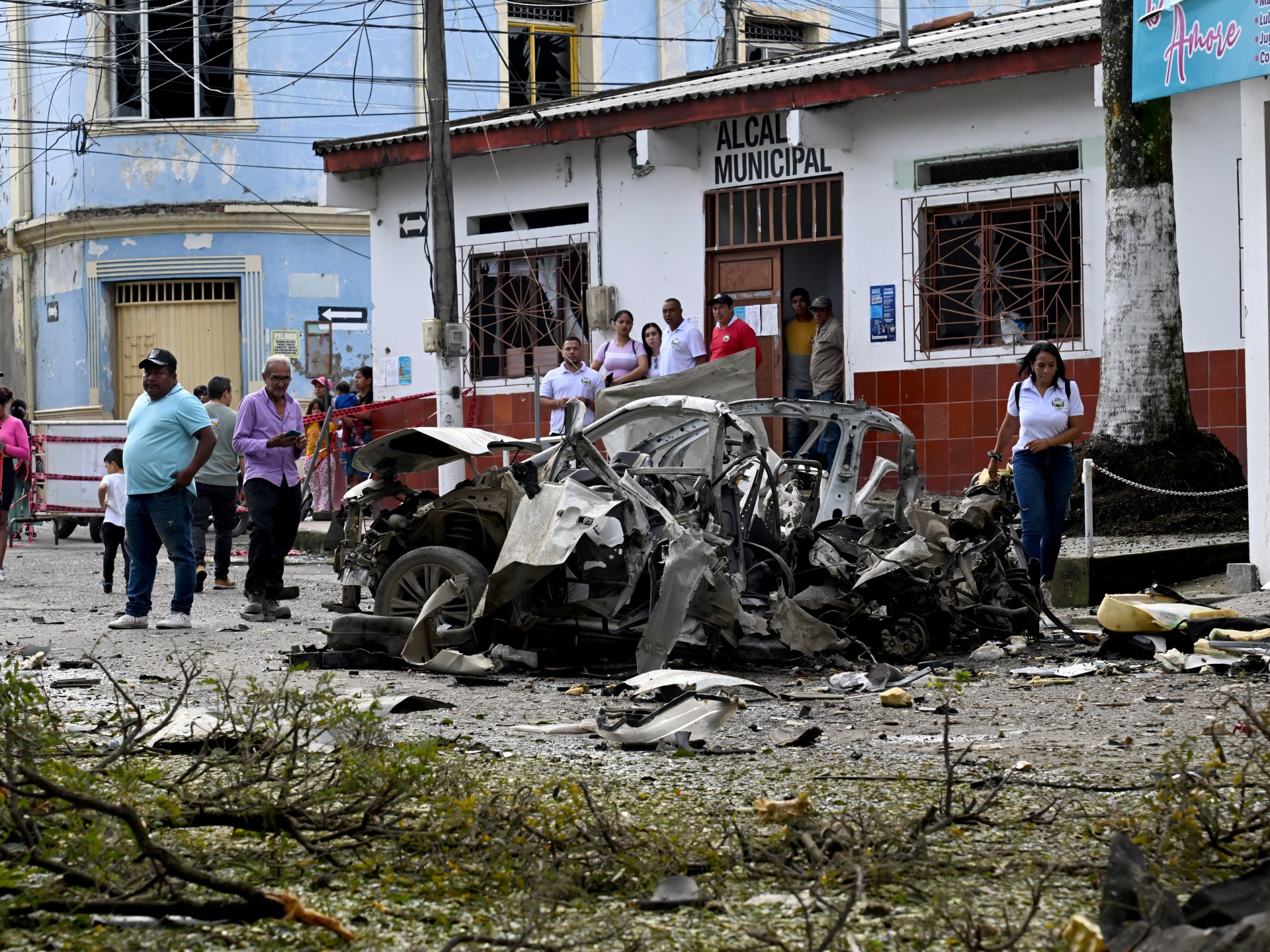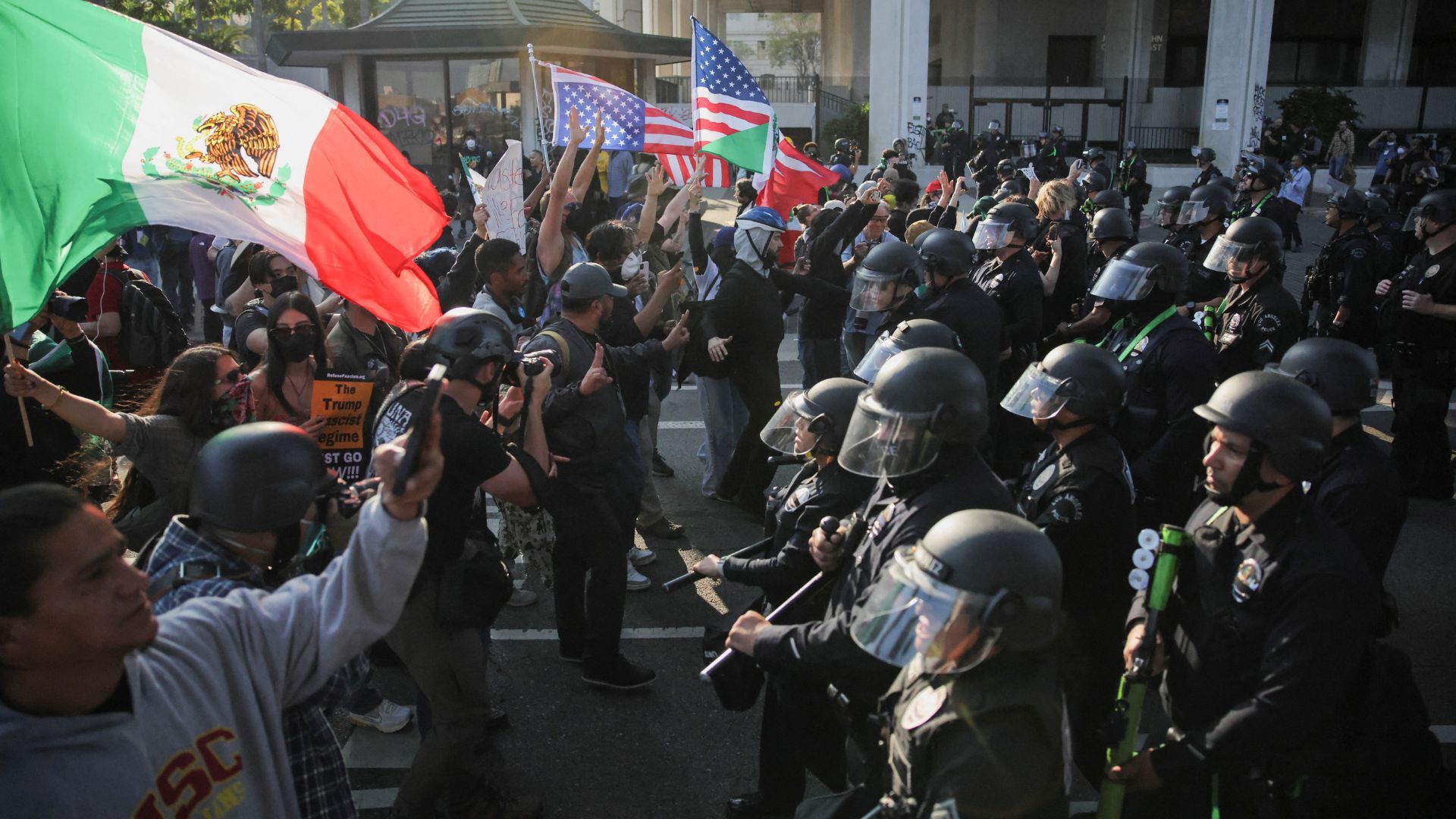With the FIFA Club World Cup 2025 about to get under way on Saturday, the football league in the host nation United States (US) finds itself at odds with players from its three participating clubs over monetary compensation from the tournament.
Three Major League Soccer (MLS) clubs – Inter Miami, Seattle Sounders and Los Angeles FC – are among the 32 teams that have qualified for the tournament running from June 14 to July 13 across 11 venues in the US.
Players from the three clubs, represented by the MLS Players Association (MLSA), have protested over the amount of compensation they are promised from the tournament by the MLS.
Here’s a breakdown of the ongoing tussle between the MLS and its players:
What’s the Club World Cup pay dispute between the MLS and its players?
The players are demanding an increased share of the tournament prize money in addition to the participation fee they are set to receive.
The players’ association has accused the MLS of refusing to engage in a negotiation so far, while the league has said it has offered the clubs an “enhanced structure” for the players.
How have the players registered their protest?
On June 1, players of Seattle Sounders FC brought attention to the issue by wearing shirts that read “Club World Cup Ca$h Grab” during their warm-up session before their match against Minnesota United FC.
A number of players from the three clubs also posted on social media with the hashtag #FairShareNow, causing fans to take notice and engage in social media conversations.
#FairShareNow pic.twitter.com/EW7ABFbsPX
How much money will MLS clubs receive at the Club World Cup?
Every MLS team will earn a participation fee of $9.55m, but can win additional prize money based on its performance.
Each win or draw during the tournament will also bring in additional prize money, which can increase further should the club advance to the next stages. Since LAFC beat Club America to qualify for the tournament in a playoff game, they won an additional $250,000 in prize money.
What part of the prize money will go to the players?
According to the existing collective bargaining agreement (CBA) between the MLS and MLSPA, the players are eligible to receive 50 percent of the prize money in undefined tournaments such as the Club World Cup.
The MLS, on Sunday, said it has proposed an enhanced structure for the Club World Cup “to reward both participation and competitive achievement in the tournament.”
According to the MLS, this is what’s on offer in the revised proposal: “In addition to the guaranteed $1m per team for qualifying, 20 percent of all prize money earned from the group stage onward would be allocated to players. If an MLS club wins the Club World Cup, its players could collectively receive more than $24m in performance bonuses.”
What do the MLS players want?
They seek a better deal than the one put forward by the MLS in its latest proposal, and for the league to engage with its players in a negotiation.
The players’ association says the latest proposal offered by MLS does not include any additional participation bonuses for the players and offered “below-standard” back-end compensation.
The MLSPA has also accused the league of asking for unrelated concessions to the CBA.
As things stand, the CBA includes a provision that caps the amount of prize money that can go to players at $1m. The MLSPA believes the players are entitled to a bigger share of the funds.
“The timing, substance and retaliatory nature of the proposal sends a clear message: MLS does not respect or value players’ efforts with regard to this tournament,” the MLSPA said in a statement on Sunday.
It further added that the proposed 20 percent share of the compensation amount is “below international standard”.
“Although not surprised, the players and the MLSPA are deeply disappointed by this message,” the MLSPA said.
An update on Club World Cup Bonuses.
MLS spent most of last week making threats and promising retaliation against the MLSPA and players because Seattle players wore t-shirts that expressed frustration over the league’s refusal to engage about Club World Cup compensation.
More… pic.twitter.com/jAz06ASGYw
How has the MLS responded to the players’ demands?
Neither side has issued any further statements, but players have continued posting on social media with the #FairShareNow hashtag.
Reports in US media said the talks between the two sides were ongoing.
The league’s last statement said that MLS owners believe that performance-based incentives are appropriate given the expanded format and increased prize pool for the tournament.
“The League values the continued dedication and commitment of its players and looks forward to supporting them as they represent their clubs – and Major League Soccer – on the global stage this summer,” it added.
What happens if the players and MLS don’t reach an agreement?
Should both sides remain at loggerheads, it is unlikely that the players will refuse to take the field for their games in a tournament hosted in their clubs’ home country.
If they do, the players risk being fined and reprimanded by the league in accordance with its rules.
How does the MLS pay dispute impact the FIFA Club World Cup?
It is unlikely to impact the tournament directly unless the players refuse to take the field for their clubs.
However, the controversy has added what would be considered unwelcome attention to the MLS’s pay structure and the Club World Cup, a tournament that has already faced plenty of criticism from football players and officials.
Why aren’t players from other leagues protesting?
It remains unclear how other leagues and teams are compensating their players for their participation in the Club World Cup.
The breakdown and distribution of the prize money and participation fee vary across leagues.
